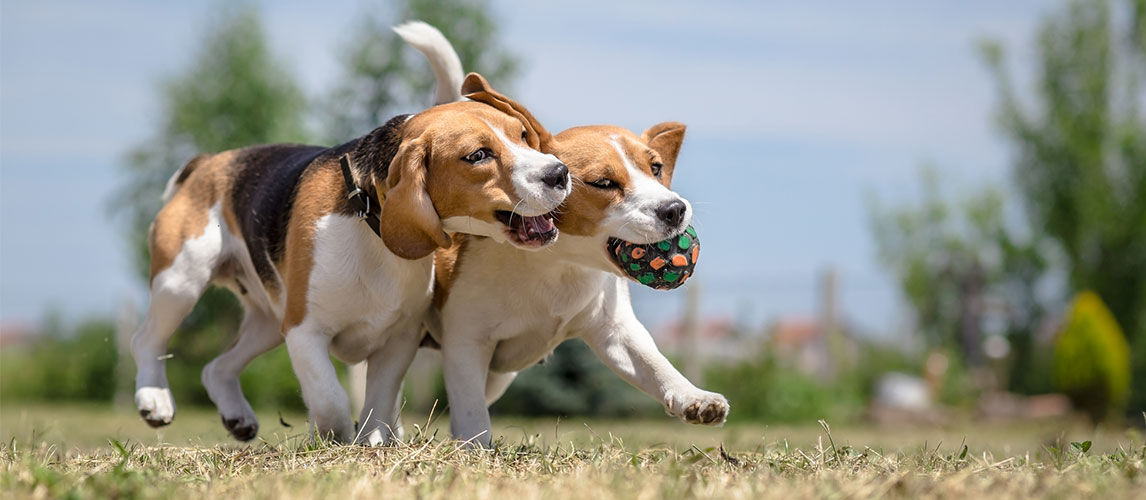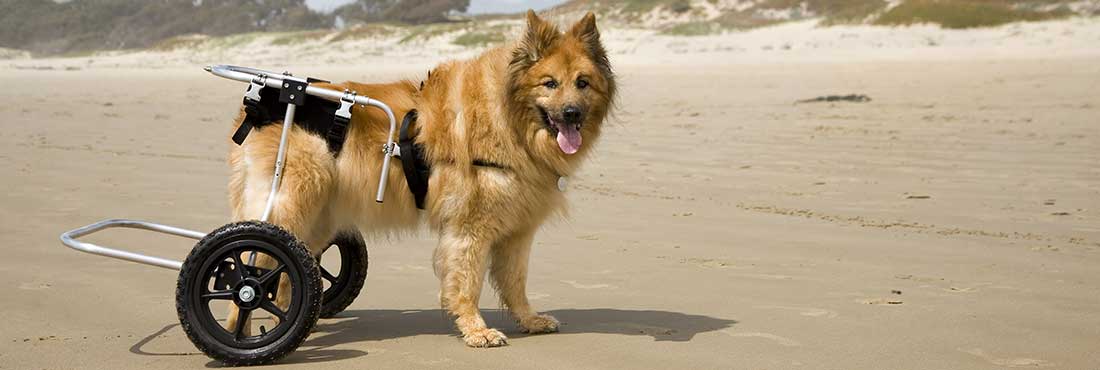Arthritis in dogs can be difficult to deal with. It’s not easy seeing your four-legged friend uncomfortable or in pain. However, there are ways to recognize your pup’s early signs of arthritis. Knowing the signs can help you to pursue the best course of action to help your dog deal with the discomfort and live its best life despite its ailment. We look at what canine arthritis is and what you could do to help your doggie deal with it.
What is Canine Arthritis?
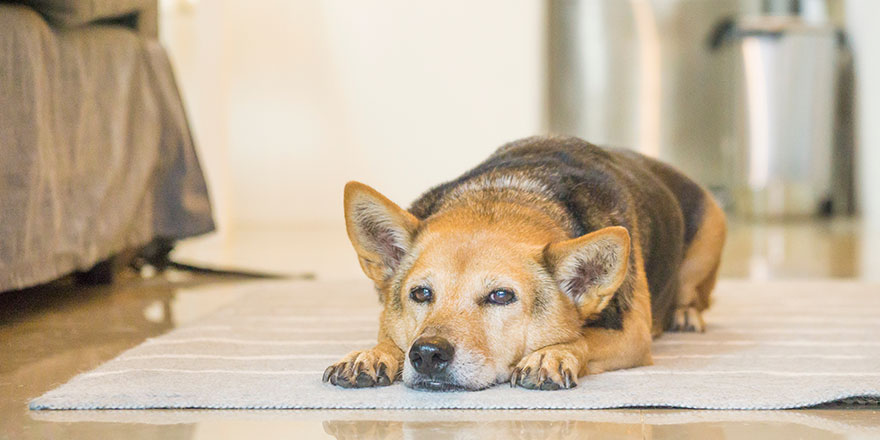
Arthritis is a chronic condition that affects a dog’s joints, resulting in swollen joints and discomfort or pain in one or more joints. It more commonly affects senior dogs. However, it is possible for early-onset arthritis to affect dogs of all ages back to puppydom. Some dogs are born with genetic predispositions to developing arthritis, whereas for others, it can be bought on by my trauma. There are also multiple forms of arthritis in dogs, the two main types being rheumatoid arthritis and osteoarthritis.
Rheumatoid Arthritis
Rheumatoid Arthritis is an autoimmune disease. This means the body is starting to attack the joints, causing tissue degeneration, swelling, stiffness, and pain. This disease can affect not only the knees but also the shoulders, ankles, and wrists.
Osteoarthritis
Osteoarthritis, also known as Degenerative Joint Disease, is the gradual degeneration of cartilage in the joints. It can be caused by various factors such as old age, chronic trauma to the joint, poor nutrition, and genetics.
Can Arthritis Be Treated?
Various treatment options can be used for managing arthritis and soothe the affected joints, including prescription medications, NSAID therapy, weight loss, and physical therapy. There are also things you can do to help your dog manage arthritis pain and move more easily, which we will discuss later in this article.
How Do Dogs Get Arthritis?
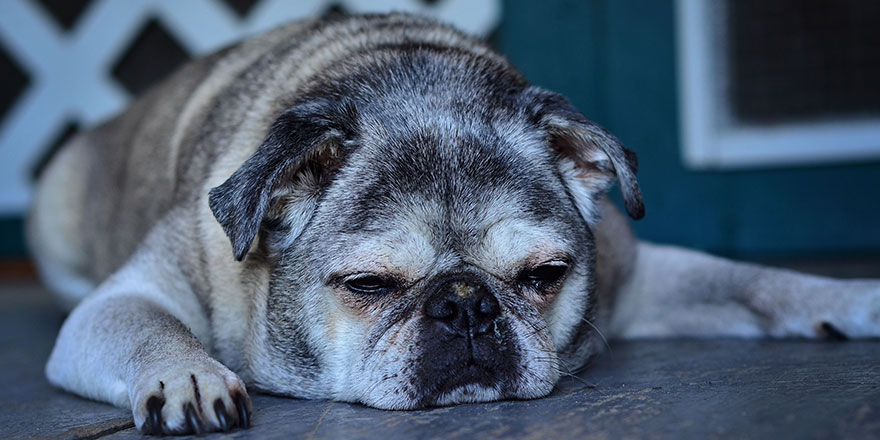
Considering their spritely nature, it can be easy to find yourself wondering how dogs can get arthritis. Surely they’re too fit to have to deal with something like that? However, you may be surprised to know that any dog can get arthritis; small, tall, fat, or thin, every pup has a chance of developing it in some way, just like humans. Arthritis can be bought on by multiple factors, both internal and external.
Old Age
As dogs grow older, they can begin to develop this joint disease as a natural part of the aging process. Joints typically stiffen, especially in the knees and hips, making them less mobile. All dog owners will notice less movement with a senior dog as they age. To help your aging furry friend, you might want to give them one of the products featured in our The Best Supplements for Older Dogs guide.
Excess Weight Gain
Excessive weight gain is often a big factor in a dog’s arthritis development. The extra weight adds unnecessary pressure on the joints to move. Arthritic dogs will struggle more frequently with mobility and painful joints if their body weight is about average and will need to lose weight to alleviate that pressure. A lean body condition is ideal to keep your dog’s joints healthy.
Trauma to the Joint
Trauma caused to the joint or surrounding area often triggers arthritis in canines. This could be something as big as falling onto a hard surface or something as simple as tripping over while out on a walk. The more severe the trauma, the more likely it is that arthritis could become a problem post-recovery.
Other Ailments
Other health problems can also have the unfortunate side effect of causing the onset of arthritis. Cranial cruciate ligament disease, which causes the supporting ligament to the knee joint to degenerate, often results in arthritic joints due to the lack of physical support. Malnutrition can also result in the onset of arthritic owing to the body not receiving the correct nutrients to develop the necessary lubrication for the joint, as well as causing atrophy of crucial muscle masses. Furthermore, hip and elbow dysplasia are very common causes for arthritic joints outside of general old age because the adjusted gate means additional pressure is being put on other joints in an unnatural way.
Genetics
Some dogs are simply genetically predisposed to arthritis and other degenerative joint diseases. Unfortunately, in these situations, it is more a case of helping them control the pain once it starts to bother them instead of avoiding its onset. Small and large breeds tend to be at higher risk of hip dysplasia or elbow dysplasia than average-sized breeds, which can lead to arthritic joints and pain. Purebreds are also more likely to be affected by hip dysplasia due to the many years of selective breeding causing mutated genes to develop.
4 Common Signs of Arthritis in Dogs
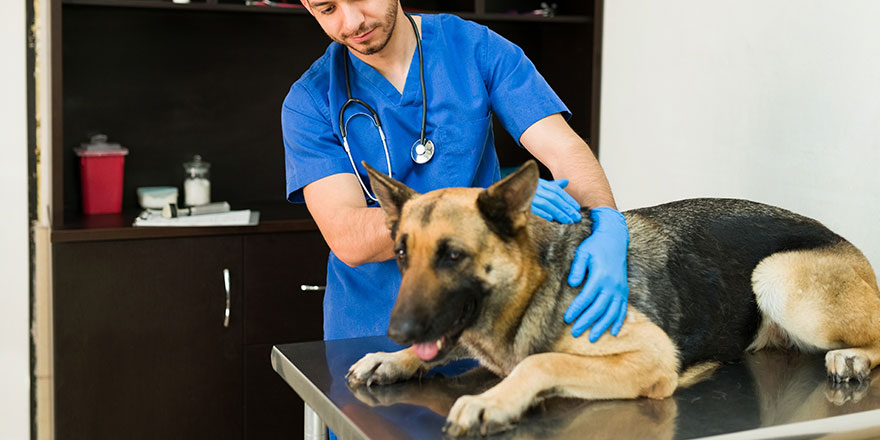
Many dogs are extremely adept at hiding their pain. After all, in the wild, a dog wouldn’t want to reveal its weaknesses. However, as their owner, you will likely know them well enough to recognize when something isn’t quite right. Some of which will show during the early stages.
1. Aversion to Being Touch Along the Spine or the Affected Limb
As you might expect, the pain that typically accompanies arthritis can make the affected areas quite sensitive. You may find that your dog doesn’t particularly enjoy being petted or touched too often around these areas. Each dog owner will know their dog well enough to recognize if it is uncomfortable with being touched and should back off if needed.
2. Walking With a Limp and Stiffness
The most common side effect of arthritis in dogs is stiffness, which is often how it is recognized in dogs and humans. Many dog owners tend to notice this first, with dogs showing signs of discomfort and difficulty getting up and out of bed or limping while on a walk. While a limp can sometimes be a simple matter of a pulled muscle, it’s worth monitoring to see if other symptoms present themselves.
3. Difficulty in Climbing Stairs or onto Furniture
Adding to the stiffness problem, dogs often show disinterest in climbing onto things like furniture or struggle with climbing stairs. If your dog is in and out of the car frequently, you may also notice that they have to reevaluate how they access the vehicle or may need some help from time to time.
4. Swelling of the Joints or Spine
So as well as the joints and/or spine being tender, they may also appear swollen. Pain control with swollen joints is extremely important as you allow your dog to move more freely. X-rays can usually show the severity of arthritis more clearly, allowing you to better understand the cause and how to move forward.
Other Dog Arthritis Symptoms
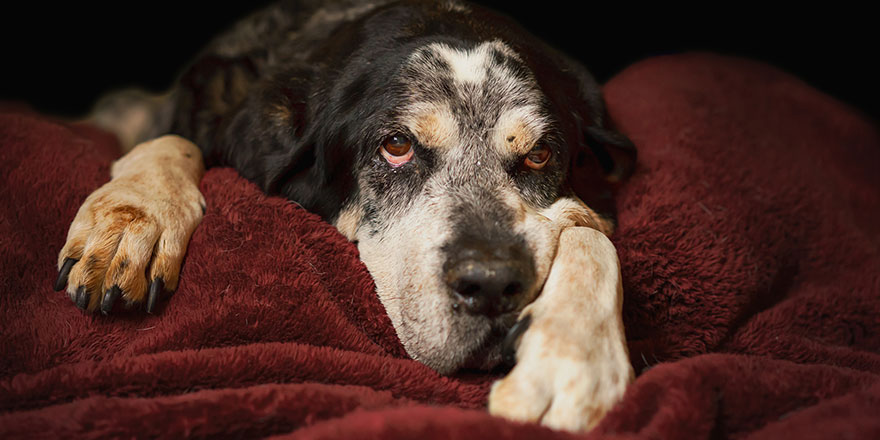
Some other general symptoms are also synonymous with arthritis in dogs, which may also help you to recognize the development of the degenerative joint disease earlier:
- Irritability: If your dog is feeling sore and achy, they’re not going to feel too happy all the time. So be mindful of this fact, and give your pup a bit of space if they’re acting grumpy.
- Loss of appetite: Pain is often a big trigger for loss of appetite. Your dog can become preoccupied with its discomfort and lose interest in its food. This can often be combated by putting their food nearer to their bed and giving them tasty treats to entice them to eat.
- Lethargy and disinterest in playtime: Once again, if their legs and hips hurt, they will not want to run and jump all the time. They may still try to play, but you may need to adjust your play style to suit their limited motion.
- Excessively licking the affected area: A common sign of pain in dogs is licking the area that is causing them trouble. You may have noticed this when they’ve had a bite or scratch from something. They will lick the area raw. Ideally, you need to avoid this behavior as it doesn’t help stop the pain, but it can irritate their skin, making them want to lick the area more – becoming a vicious cycle.
How to Ease Joint Pain in Your Dog
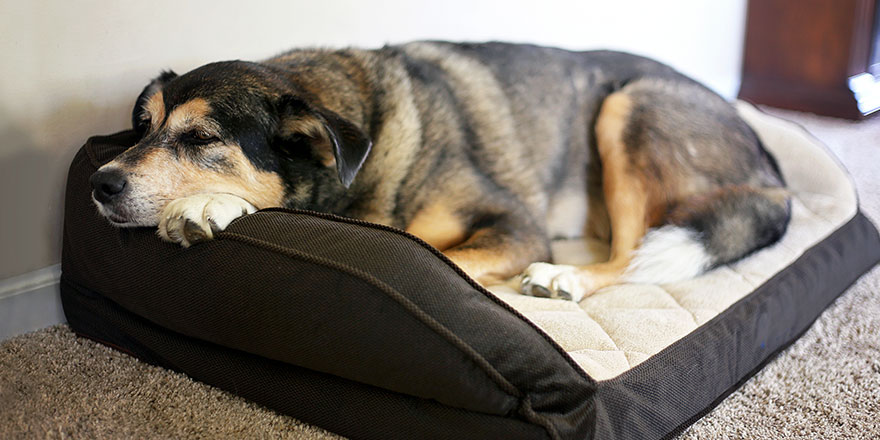
There are ways that you can ease the discomfort in your dog’s painful joints. You can do things to help your arthritic dog that won’t be permanent fixes. However, they can reduce pain and help them be more comfortable.
Keep Food and Water Bowls in an Easy-to-reach Place
If your dog is in pain, particularly an older dog that may have other problems, a small thing you can do is bring their food up to their level. It may not seem like much, but it saves them the hassle of bending down to reach it every time they fancy a drink. This is especially true of large or extra-large breeds, where the ground is much further away.
Regularly Physical Examination to Monitor Progression
A physical exam may not be all that comfortable for your dog, but it is essential to understand the severity of the condition to adapt further if you need to. If your dog’s arthritis takes a turn and the pain worsens, you can adjust their exercise schedule, change their sleeping arrangements, and do what you need to to keep them comfortable. Those regular wellness visits with the vet can be a big help for you and your dog.
Provide a Ramp or Lifting Harness to Help Them Into the Car
If your dog’s back legs are particularly painful, they will struggle to jump into a vehicle or onto furniture. So if you’re taking your dog out for regular trips in the car, you should look to provide a ramp or lifting harness to relieve the strain on their legs. Difficulty getting into the car can also be an early sign of arthritis because jumping is a high-impact activity, so it will be one of the first things affected by painful joints.
Keep Them at a Healthy Weight
Adjusting your dog’s diet to be lower in fat and higher in protein, calcium, vitamin D, glucosamine, vitamin B, and omega fatty acids can help the body to strengthen the joints and potentially help your dog to handle the pain more easily. Some pet owners will even supplement their dog’s meals with supplements such as chondroitin sulfate for some added support.
Use an Orthopedic Bed
Appropriate management of your dog’s sleeping arrangements can help them be more comfortable with day-to-day life. Getting your dog an orthopedic bed with a low opening to save them from stepping over the side is a great way to go. Orthopedic beds provide additional support for your dog’s joints and often help to keep the joints warm as your dog sleeps so that they are not as still when they wake up.
Get Them Into Physical Rehabilitation Sessions
Rehabilitation sessions are specifically designed to help your dog to deal with the pain and discomfort of arthritis. While at rehabilitation sessions, you can ask for advice regarding the best way for your dog to exercise so that they don’t put too much stress on their painful joints. You may even find that your dog is recommended to attend aqua therapy, which utilizes the weightlessness of being in the water to free it from the ache of weighting its legs. This is also an excellent way for your dog to get a lot of exercise in a short amount of time.
Sources:
- Angela Mazza, DVM, Ouch! My Aching Joints!, The MSPCA–Angell
- Integrative Treatments for Dog and Cat Arthritis, Best Friends Animal Society
Frequently Asked Questions
Yes. Unfortunately, quite a few dog breeds are naturally susceptible to arthritis. For some dogs, osteoarthritis is more common and ranges from small to giant breeds. Labradors, German Shepherds, Pugs, Dachshunds, Mastiffs, Bloodhounds, and many more are affected breeds. Other dogs such as Poodles, Shetland Sheepdogs, and Greyhouse are more prone to Rheumatoid Arthritis.
Though arthritis is a progressive disease, it can be treated to help make your dog’s life easier using steroids, physiotherapy, and pain control. It is worth noting that arthritis does not cause sickness. It is a problem with mobility. Therefore dogs with arthritis can live long, happy lives after a diagnosis. However, older dogs may struggle more than younger dogs due to old age impacting their joint health more severely.
Swimming is the best possible exercise for a dog with severe arthritis or joint damage. Your dog’s comfort is extremely important while exercising, and swimming removes most of the impact from your dog’s joints and can even help to decrease inflammation by giving their joints a break. If you cannot take your dog swimming, try to keep its exercise sessions short and sweet. This may well mean sticking to playing in the backyard rather than walking around the block.
There are ways that you can reduce the likelihood of arthritis developing in dogs. Weight management is a big one, any excess weight will put additional pressure on the joints, leading to arthritis. Low-impact exercise regularly can also help to strengthen the legs and protect the joints. Also, a healthy diet provides the nutrients and minerals needed for strong bones and healthy joints.
Note: The advice provided in this post is intended for informational purposes and does not constitute medical advice regarding pets. For an accurate diagnosis of your pet's condition, please make an appointment with your vet.





